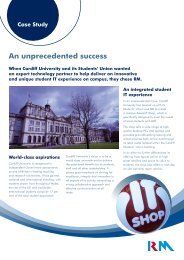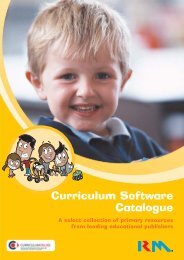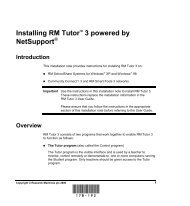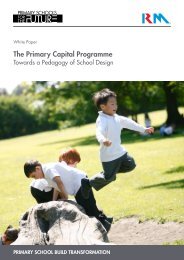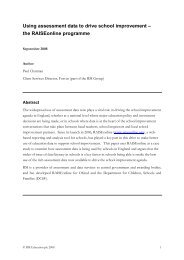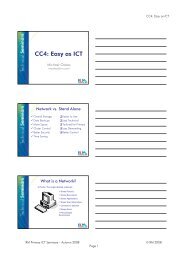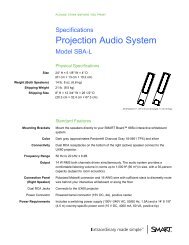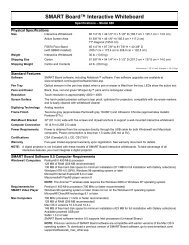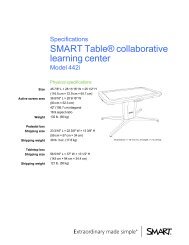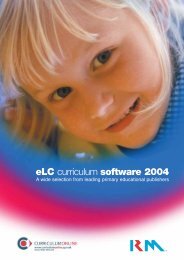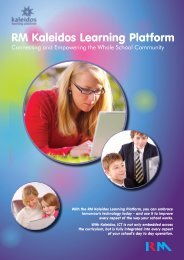Science Content Guide - RM.com
Science Content Guide - RM.com
Science Content Guide - RM.com
Create successful ePaper yourself
Turn your PDF publications into a flip-book with our unique Google optimized e-Paper software.
Introduction<br />
Skills-based teaching<br />
• They provide automatic drawing of graphs.<br />
• They can show what is invisible in an experiment (e.g., how molecules are<br />
moving).<br />
• They enable students to visualise principles and processes, helping them<br />
to interpret the underlying concepts.<br />
• They appeal to students with a preference for visual learning, and open<br />
another route to understanding.<br />
Multimedia <strong>Science</strong> School materials are an excellent choice for a skillsfocused<br />
approach to science teaching. The hands-on simulations, experiments<br />
and visualisations encourage independent enquiry, reflection, discussion and<br />
creative thinking. The modular nature of the MSS material also lends itself well<br />
to a personalised approach to learning, especially when delivered within a<br />
flexible virtual learning environment such as Kaleidos VLE.<br />
MSS activities directly support the development and use of key processes and<br />
skills, to which they are referenced in the software. Through the application of<br />
these skills and processes in specific contexts, students gain a greater<br />
understanding of how science works.<br />
<strong>Content</strong>s of an MSS pack<br />
MSS content packs include the following materials for each topic covered:<br />
• A set of ready-made Lessons, each built around one or more software<br />
‘teaching tools’ – sets of animated pages, with explanatory text attached.<br />
• A ‘Getting to know’ feature, which expands the illustration or model<br />
used in the lesson. Though similar in appearance to the lesson text, the<br />
Getting to know text shows you how to get the best out of the teaching<br />
tools that underlie the lesson pages, rather than explaining the main<br />
learning points. Also, the Getting to know screens are the basic screens<br />
used to construct the lessons (the lessons themselves use specific versions<br />
of these screens, with options and settings pre-selected for each lesson<br />
scenario).<br />
• A Background notes document, primarily for teacher use, provides a<br />
detailed lesson overview. This describes the prior knowledge assumed on<br />
the students’ part, lists the objectives the students will have achieved at<br />
the end of the lesson, and offers timings and teaching tips for the running<br />
of lessons. Background notes can be edited and printed as required.<br />
• The MSS 11–16 content packs also include a Worksheet for each lesson,<br />
designed for students to <strong>com</strong>plete in conjunction with the lesson. Some<br />
worksheets do not require simultaneous access to a <strong>com</strong>puter; a note at<br />
the top indicates how it should be used. Worksheets can be <strong>com</strong>pleted<br />
on-screen, in exercise books or printed off, and are fully editable. The<br />
MSS 16–18 content packs do not include worksheets.<br />
1–2 Multimedia <strong>Science</strong> School




